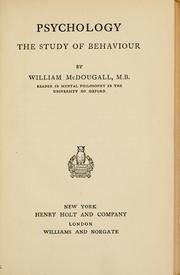
Photo from academic.microsoft.com
Background: Occupational segregation by gender is one of the major problems faced by professional women in the labor market. Since the sixties, psychological explanations point out that gender stereotypes are… Click to show full abstract
Background: Occupational segregation by gender is one of the major problems faced by professional women in the labor market. Since the sixties, psychological explanations point out that gender stereotypes are responsible for this persistent inequality in the workforce. Nevertheless, most of research has overlooked that emotions are particularly important as the discrimination faced by professional women is better explained by the ambivalent feelings they provoke than by stereotyping. Aim: The aim of this research is to analyse from the Stereotype Content Model (SCM, Fiske et al., 2002) and the Behaviors from Intergroup Affect and Stereotypes (BIAS) Map (Cuddy et al., 2007) whether cognitive, affective and behavioral components of prejudice act jointly to explain gender segregation in the labor market. Method: 1098 Spanish workers (59% women) from different occupational sectors were requested to rate how professional men and women in high (leaders) and low status (secretaries) positions who work in male (high-tech company) and female-dominated (health company) occupations are perceived (stereotypes), as well as the affective responses and the behavioral tendencies that they arouse. Data analyses: Two analyses of variance (a) and two ANOVAs with repeated measures (b) were carried out to analyze the effect of occupational status (high vs. low), type of company (high-tech vs. health) and workers’ sex (men vs. women) on: (a) the social structural variables (status and competition), (b) on the stereotyped dimensions (competence and warmth) and (c) on emotions (admiration, envy and contempt). Finally, mediational analyses were carried out to examine the link between stereotypes, emotions, and behavioral tendencies. Results: The most striking results show that (a) competition and status differentiate leaders and secretaries, (b) men leaders are rated as more competent and less warm than secretaries, whereas women leaders are viewed as more competent than women secretaries but with equivalent warmth, and (c) admiration and envy predict behavioral tendencies, but restricted to professional men regardless of organizational context. Conclusion: Results reveal that cognitive, affective and behavioral components of prejudice act jointly to explain discrimination against women in the workplace. Findings are discussed according to the SCM and the BIAS Map.
Journal Title: Frontiers in Psychology
Year Published: 2018
Link to full text (if available)
Share on Social Media: Sign Up to like & get
recommendations!